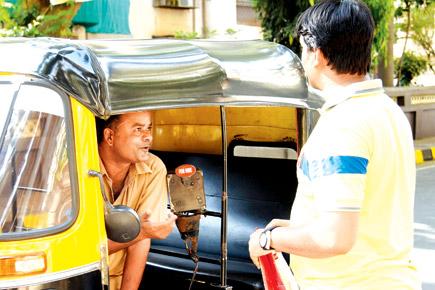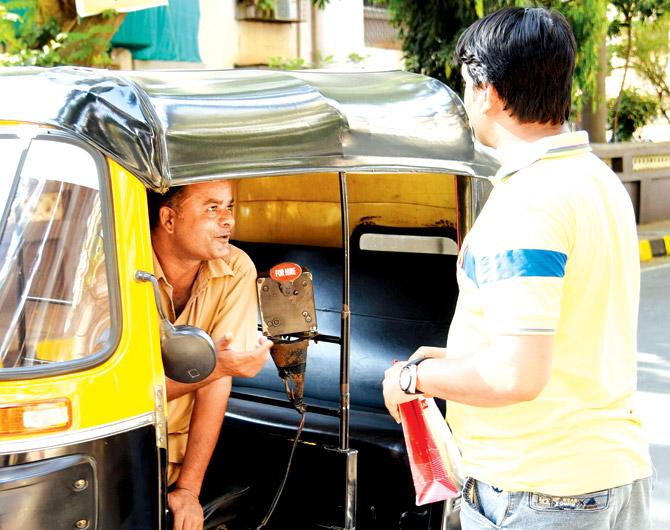While autorickshaw unions had to show an increase of 50 paisa in running costs, the final figure came to just 49 paisa, meaning there won't be a hike in base fare this year


ADVERTISEMENT
And you thought 1 paisa was too inconsequential to make a difference to your life! A single paisa has saved nearly 35 lakh commuters from shouldering another annual autorickshaw fare hike.
As per the formula suggested by the committee, a fare hike should be considered if an autorickshaw's per kilometre cost is 50 paisa or more. This year, the per kilometre expense calculated by the Mumbai Metropolitan Region Transport Authority (MMRTA) stood at 49 paise.
The MMRTA comprises top officials from the transport department and the traffic police.

Autorickshaw drivers have earned much notoriety for refusing fares despite annual hikes. File pic
The expense is calculated based on the cost of living, fuel, vehicle, spare parts and labour, vehicle maintenance and insurance, and taxes.
Loss of Rs 40 lakh
The failure to get a fare hike translates to a loss of some R40 lakh per shift for 1.04 lakh autorickshaw drivers in Mumbai alone, said sources. There are 2.50 lakh autorickshaw drivers in all of the Mumbai Metropolitan Region. On an average, an autorickshaw plies at least 80 km in a shift of 10 hours.
Decisions on fare hikes are usually taken by the MMRTA in a meeting at the end of May. The autorickshaw drivers' union has now demanded that the minutes of the May meeting be released and an official announcement of the reason behind refusing a fare hike be made.
"I met officials from the transport department and asked them put it on paper that the per kilometre cost of an autorickshaw came to 49 paise. They should also tell us if the existing formula created by the Hakim committee continues to stand or if any new set of calculations has been prepared," said Thampy Kurien, general secretary of the Mumbai Rickshawmen's Union.
Rs 40 lakh
The losses incurred by autos when a hike is rejected
80km
Average distance an auto plies in a work shift
10-hr
Average shift hours for each auto driver in the city
Rs 18
Existing base fare (for 1.5 km)
Rs 0
Minimum fare demanded by auto unions
Tracking 1 paisa's history
> The anna series was introduced on August 15, 1950, and represented the first coinage of Republic India. One rupee consisted of 16 annas.
> With the move towards decimalisation, the Indian Coinage Act was amended to adopt a metric system and enforced on April 1, 1957.
> The rupee's value remained unchanged, but it was divided into 100 paisa instead of 16 annas or 64 pice.
> For public recognition, the new paisa was termed 'naya paisa', but on June 1, 1964, 'naya' was dropped from the name.
> With commodity prices rising in the 1960s, small denomination coins — made of bronze, nickel brass, cupro-nickel and aluminium bronze — were gradually minted in aluminium.
> The shape of the 1-paisa coin also changed in 1965, from circular to square. Over a period of time, 1, 2 and 3 paisa coins were discontinued in the 1970s.
 Subscribe today by clicking the link and stay updated with the latest news!" Click here!
Subscribe today by clicking the link and stay updated with the latest news!" Click here!






